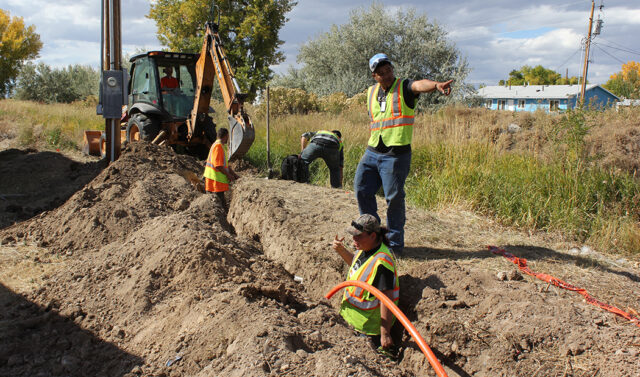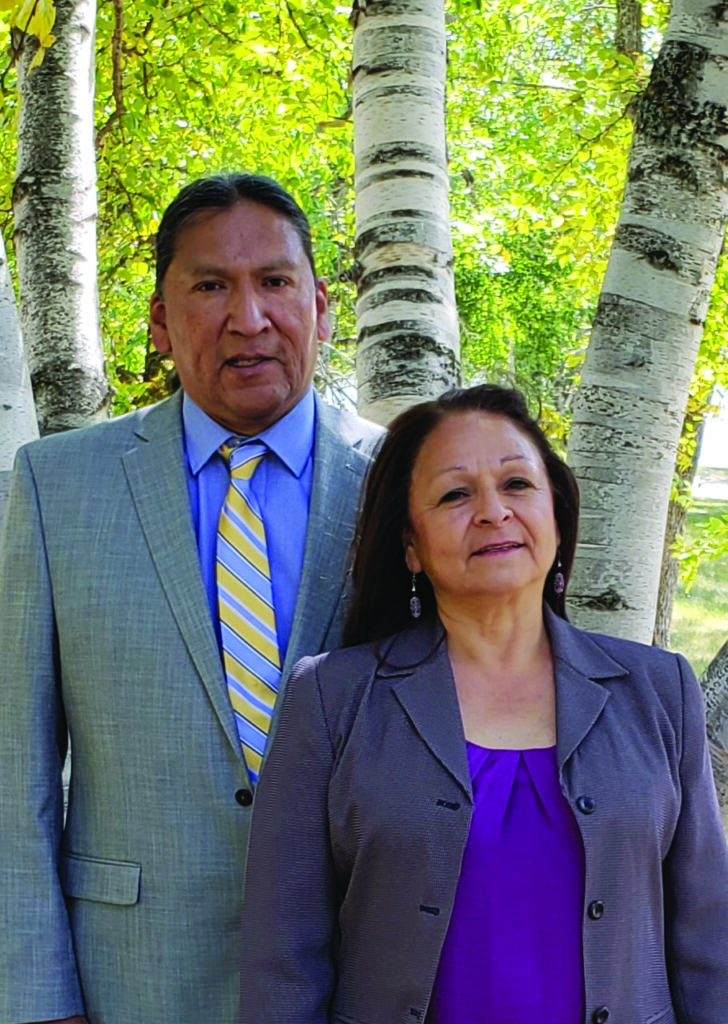
By Lee Egerstrom
Business journals and mainstream media all across America are focusing attention on what many call “the new normal” post-pandemic way of working. Questions arise over how many people currently working from home or other remote locations will actually go back to offices or continue to work off campus using modern technology.
For Madonna Peltier Yawakie and her husband Melvin (Mel) Yawakie, it is practically a meaningless question. But it does strengthen public awareness of the important work their Turtle Island Communications Inc. company does in Indian Country.
Based in the Minneapolis suburb of Brooklyn Park, Turtle Island Communications (TICOM) works exclusively with tribal governments, local tribal businesses and public agencies. Through them, they help bring modern, broadband communications to homes, businesses and public entities at tribal nations throughout the Midwest and Western states.
The “new normal” approach to doing business was always the “old normal” way in remote areas of rural America and especially on tribal lands, the Yawakies point out. There weren’t many offices or homes in these settings that had proper, hi-speed communications.

Without these services it has been extremely difficult for people to conduct business and “reach out to people who may be no more than a couple of miles away,” Madonna said in an interview.
She is a member of the Turtle Mountain Band of Chippewa in North Dakota. He is Pueblo Zuni from the Southwest. Both grew up in families where calling a relative a few miles away could be an expensive long distance telephone call.
That is still a problem in many parts of Indian Country, they point out. It is a huge impediment for any tribal enterprise or local entrepreneur wanting to start and operate a modern business from what clearly is home.
The telecommunications shortcomings in parts of tribal lands goes far beyond sustaining and starting business enterprises, government studies show. The need for modern, broadband communications supports life – crucial for modern education, healthcare, public safety and general quality of life.
“You don’t just wake up one day and say, “Let’s start a business,” Madonna said. “We’ve seen the need for most of our lives.”
Both had extensive telecommunications backgrounds and were painfully aware of disparities between the communities their prior employers served with modern communications and what was available in their home communities. They both had proper educational backgrounds to step in and serve Native American tribes.
Madonna said she thought she would want to work on economic development for tribes when she went off to college. Following that objective, she received a Bachelor’s degree in Business Administration and a Master’s degree in Community and Regional Planning from North Dakota State University (NDSU).
She serves as president of the family-owned company which allows her to continue her original goal although from a highly skilled, technical perspective.
Mel is vice president of the company and heads engineering, planning, construction and project management. He has a Bachelor’s degree in Electrical Engineering from NDSU, and an Associate degree in Electronic Technology from what is now Haskell Indian Nations University in Lawrence, Kan.
In that role, he leads in planning, designing and implementing both wireline services and wireless telecommunication systems for the tribally owned broadband, high-speed communications systems.
The Yawakies started TICOM exactly 20 years ago. Their first big project was for the Standing Rock Sioux Tribe in the Dakotas.
This became a learning experience in itself, Madonna said.
“Everything that gets done on tribal land is the result of partnerships,” she said. To start with, she added, there needs to be strong local leadership. Then, it takes expertise and help for tribal entities and local groups to “overcome hurdles – I don’t like to use the term barriers” – that inevitably make moving forward difficult.
Regulations and public policies can be some of the “hurdles.” Financial ties between tribes and outside groups can be another. Most of these obstacles, however, can be crossed over again with help from supportive partnerships, she said.
“The Shakopee Mdewakanton [Sioux Community] has been tremendously supportive of tribes and have helped find funding for projects,” she said.
For example, the Shakopee Mdewakanton Sioux Community (SMSC) provided $500,000 to help the Blackfeet Nation in Montana secure financing for its Siyeh Corp. tribal business firm. It helped them secure financing to purchase a telephone exchange from a nearby utility cooperative.
This allowed Siyeh to modernize and provide telecom services for the Blackfeet and surrounding area.
Over the year, TICOM has worked with tribes and partnering groups throughout the western states. These include two projects in Washington State, with tribes in Wyoming, conducting feasibility studies for Minnesota’s Dakota communities, and an especially noteworthy telecommunications program for the Meskwaki Nation, also known as Sac & Fox Tribe of the Mississippi in Iowa.
This tribally owned communications system is being built in stages and will have Meskwaki Nation homes and businesses up to speed with anywhere in Iowa.
“We did about a third of the build out on it. Mel designed it,” Madonna said.
Much work remains, however, for tribal communities across “Turtle Island” (North America) to get caught up to speed with modern telecommunications. This is borne out by studies from the Federal Communications Commission (FCC) and from government auditors accessing broadband access and development supported by government programs.
Madonna said recent federal programs are addressing these “hurdles,” and she has been a consultant for FCC studies as well.
Going back to the work that TICOM and local tribal leaders must go through, the Yawakies do offer a complex spectrum of services.
As a starting point for such projects, the first stage is providing knowledgeable consulting services.
This includes feasibility studies of costs and benefits, a business plan for the tribes or their tribally-owned enterprise, financing plans, and advise on regulatory requirements.
Engineering and Technical services include telecommunications network planning, network engineering and outside plant engineering to support ongoing, post-construction operations.
And, TICOM helps tribal entities through construction and installation work with options for turning operations over to tribal operators, other contractors, or to providing ongoing management of the system themselves.
From local leaders on through technical expertise and financial planning, she said, “it is usually five years to bring an idea to (tribal) acceptance.” She especially likes seeing tribal enterprises established that create and train local people to operate the new entity.
That becomes the local, “human capital building” economic development she set out to do when she went to college.
Links to information and news about the Yawakies, Turtle Island Communications and specific projects can be found at:
http://www.turtleislandcom.com,
https://minnesotanativenews.org/2353,
and https://nativenews.jour.umt.edu/project/2021-home/investing-in-connection.






